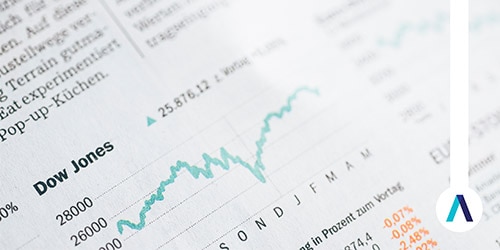“The difficulty lies not so much in developing new ideas as in escaping from old ones.”
This is a quote from John Maynard Keynes, regarded by many as the founder of modern economics. After looking at some of the more humorous quotes of his, I do not believe the irony would have been lost on him that we are now trying to escape many of the concepts popularised by his Keynesian theory of economics.
During times of great uncertainty, traditional economics are about as useful as a screen door on a submarine. While it can provide us with a view, albeit distorted, into public policy and markets, it fails to provide policy makers access to the control room that is needed to get us back above water.
One alternative that has been receiving a lot of attention, due to its involvement in driving the Covid-19 related policies of some countries, is behavioural economics. A deviation from traditional economics, the relatively new field of behavioural economics integrates insights from neuroscience, psychology, and micro-economic theory to build models for explaining and predicating behaviour.
To many of us the premise of predicting behaviour might sound like just another Derren Brown show or some or new form of Nostradamian precognition. After all, each human has free will and is wholly unique, right? …just like everyone else. While it is true that predicting individual behaviour ranges from extremely difficult to impossible to fully predict, once we start looking at groups of individuals the “maybe’s” change rapidly to “definitely’s” as anyone familiar with the concepts brought on by Big Data could attest to. Amazon is even using predictive analytics that tells them what you want before you even know you want it. They use this information to ship orders to warehouses closer to the customer before the customer has even placed the order.
Rather than trying to rewrite Les Prophéties using behaviour economics (although I would be very interested in reading this book if anyone finds themselves especially inspired during the lockdown), let’s explore how its principles can be used to better understand and improve our decision making today.
The Homo Economicus or “Rational economic man” that traditional economics defined us as, has proven to be far too kind. The first wave of behavioural economics, almost mockingly, replaced this man with a bumbling idiot that is predictably “irrational”. Most can agree that these definitions went too far in either direction. Now, in an almost Goldilocks-esque tale, the second generation is presenting a unified economic theory with humans, defined, rather pleasingly, as “normal”.
This is expanded so that we can be normal-smart, but sometimes normal-stupid. We can be normal-knowledgeable, but sometimes normal-ignorant. But the most important point is that we are intelligent; able to learn. We can increase the ratio of smart to stupid and knowledgeable to ignorant within ourselves. It is in this spirit that I want to explore some of the common cognitive and emotional biases inherent in our decision making that behavioural economics is based on.
Firstly, we need to understand that we are all susceptible to these mental miscalculations, the number of which could fill volumes (1). They are ingrained in us through many years of evolutionary, societal, and systemic progress. Another factor is that as humans we are continuously bombarded with information. We are not able to process these vast amounts of data, so our minds have created mental shortcuts to help us manage. These are also known as heuristics and are like rules of thumb we use to make more than 95% of our decisions.
If you caught yourself thinking “my brain is not as highly flawed as this guy is suggesting”, then you have just encountered your first bias, namely over-confidence bias. This is the extremely common bias that leads us to put more weight on our own internal store of knowledge than on an objectively more accurate source. Most of the time this is done subconsciously. This should not be confused with arrogance although both have the same remedy, namely humility. A very powerful tool that we can use to keep both ourselves and our minds in check.
Another bias that will have a much larger impact on our decisions than we realise is known as framing. This is a cognitive bias where a person’s choice is impacted by the way in which the options are presented. The core features and outcomes stay the same, but something changes in how one thinks about the decision problem, leading to different choices. An illustrative experiment is available in note (2). A suggested remedy for this is to understand that others will have different perspectives, to then seek out these perspectives to reframe the problem for ourselves. The point is not that others might know better. It is to look at the problem from multiple perspectives.
Something I have noticed recently is a rising interest in trading and investing in people that have never showed this interest before. While this excites me and I am a strong supporter of foregoing short-term spending for greater long term gain, I am also concerned that these decisions are being made for the wrong reasons. The wrong reasons I am referring to are the biases inherent in making investment decisions and are very common in investing even at the professional level. A very applicable bias given current circumstances is the mean-reversion bias, referring to the belief that the stock market must revert to previous levels or “what goes down must come up”. This is of course a somewhat ridiculous notion that can easily be disproved by something like the stock price chart of Blockbuster, now known as BB Liquidating which is still trading as a penny stock.
Another reason is that people are being driven by the bias of representativeness, which entails comparing the past events to the current situation believing that they are more closely correlated than they are. This would be people comparing the current outbreak to past events such as SARS or H1N1, etc. The reality is that circumstances are vastly different and that outcomes will not be the same, if at all. Other common biases with investing, namely loss aversion (3), availability bias (4), recency bias (5), confirmation bias (6) and the herd mentality bias (7) will all come into play. I am apprehensive that losing on these new positions can cause irreparable mental harm in terms of strengthening certain biases already inherent in the new investor that have likely stopped them from investing in the past. If you are interested in a longer list,
is a link to 124 decision-oriented biases as listed by Wikipedia.
Using analogies is a great way to reframe decisions so let us look at the investment decision in the context of tennis. Any investment requires two parties to complete the transaction, the buyer and the seller, or the tennis players in this instance. Most new investors will fail to see this specific intricacy and frame the decision as playing against a practice wall. They fail to incorporate the fact that there is a willing seller/” opponent” on the other side of the transaction. Once we realise this, we need to ask the following question: “Who is the idiot buying/selling my stock?”. Make no mistake, every trade has an idiot and if you do not know who it is then you are the one in trouble. Given the composition of the investment industry, the person on the other side of the tennis court is much more likely to be a Roger Federer than anything else. This is not meant to discourage any burgeoning investors as there can be many reasons the other party is buying or selling, and institutional investors have many limits and restrictions imposed on them. It is just another thing to consider when making the decision that seems to be missing from a lot of people’s framework.
The importance of good decision making, and acknowledging any barriers to this process, cannot be understated during this critical time. Some safety measures, such as masks and constantly sanitising hands, are leading to more risky behaviour as people fail to properly recalibrate their sense of risk. There are instances of panic buying, optimism bias causing people to underestimate the severity of the risks posed by the virus, status quo bias causing aversion to the changes needed in our lifestyles, and many more. All of these can be avoided by better understanding ourselves and our limitations. Let us all strive to be the best “normal” we can be!
Notes
(1) Should you have a deeper interest in behavioural economics, there are many great non-fiction books out there such
as Thinking Fast and Slow by Daniel Kahneman
or
Irrational Exuberance by Robert J Shiller
that you can read. For a more academic view there is
Behavioural Finance: The Second Generation by Meir Statman
which has greatly informed the curriculum for institutions like CFA
(2) Amos Tversky and Daniel Kahneman explored how different phrasing affected participants' responses to a choice in a hypothetical life and death situation in 1981.[2]
Participants were asked to choose between two treatments for 600 people affected by a deadly disease. Treatment A was predicted to result in 400 deaths, whereas treatment B had a 33% chance that no one would die but a 66% chance that everyone would die. This choice was then presented to participants either with positive framing, i.e. how many people would live, or with negative framing, i.e. how many people would die.
Framing Treatment A Treatment B
Positive "Saves 200 lives"
"A 33% chance of saving all 600 people, 66% possibility of saving no one."
Negative "400 people will die"
Treatment A was chosen by 72% of participants when it was presented with positive framing ("saves 200 lives") dropping to 22% when the same choice was presented with negative framing ("400 people will die").
This effect has been shown in other contexts:
93% of PhD students registered early when a penalty fee for late registration was emphasized, with only 67% doing so when this was presented as a discount for earlier registration.[6]
62% of people disagreed with allowing "public condemnation of democracy", but only 46% of people agreed that it was right to "forbid public condemnation of democracy".[7]
More people will support an economic policy if the employment rate is emphasised than when the associated unemployment rates is highlighted.[5]
It has been argued that pretrial detention may increase a defendant's willingness to accept a plea bargain, since imprisonment, rather than freedom, will be his baseline, and pleading guilty will be viewed as an event that will cause his earlier release rather than as an event that will put him in prison.
(3) In cognitive psychology, decision theory, and behavioural economics, loss aversion refers to people's tendency to prefer avoiding losses to acquiring equivalent gains (source: Wikipedia)
(4) The availability heuristic, also known as availability bias, is a mental shortcut that relies on immediate examples that come to a given person's mind when evaluating a specific topic, concept, method, or decision (source Wiki)
(5)"Recency bias" is the phenomenon of a person most easily remembering something that has happened recently, compared to remembering something that may have occurred a while back.
(6) Confirmation bias is the tendency to search for, interpret, favour, and recall information that confirms or support one's prior personal beliefs or values. It is an important type of cognitive bias that has a significant effect on the proper functioning of society by distorting evidence-based decision-making.
(7) Herd mentality in finance is the phenomenon where investors follow what they perceive other investors are doing, rather than their own analysis. In other words, an investor exhibiting herd instinct will gravitate toward the same or similar investments based almost solely on the fact that many others are buying the securities. (source: https://www.investopedia.com/terms/h/herdinstinct.asp)


